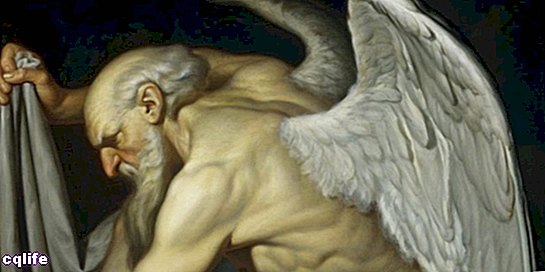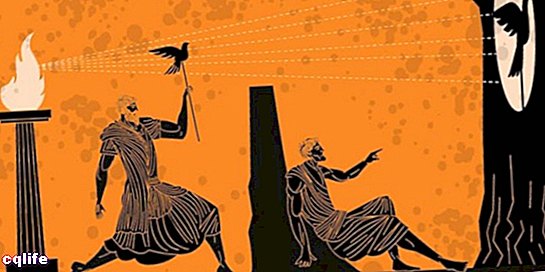We explain what an allegory is and its function. Also, as used in literature, philosophy, painting, and various examples.

What is an allegory?
The terms allegory or allegorical are often widely used in the world of Arts and from thought, but depending on your context specific can designate different things.
These possible meanings, however, are linked to the etymological meaning of the word, coming from the Greek voice allegory, made of allos ("Other") and agora ("Speech" or "assembly"). That is, in principle an allegory consists of explaining or expressing an idea, through terms that are alien to it but that serve to illustrate it.
This definition is sustained throughout the three main uses of the word allegory: the literary, the philosophical and the one referring to the art of the painting, and as we will see later, in each case it is understood in a slightly different way. In any case, allegories serve to make certain ideas more understandable, through a set of metaphors that borrows real or fictional elements; that is to say, making use of the figurative sense.
Literary allegory
As for literature Y rhetoric is concerned, an allegory is a stylistic procedure that depends directly on the use of metaphors. Through a concatenated series of them, it seeks to illustrate a meaning or an idea, ideally to convey meanings difficult to conceptualize otherwise.
Allegory is common in different literary periods, for illustrative or sometimes pedagogical purposes. The Spanish playwright Pedro Calderón de la Barca (1600-1681) masterfully used it in his autos sacramentales, religious-themed plays, and came to define it poetically as follows (in The true god Pan, from 1670):
The allegory is no more
than a mirror that moves
what it is with what it is not,
and there is all its elegance
in which it comes out similar
both the copy in the table,
that the one who is looking at one
think you are looking at both.
In a literary work a character It can be expressed through allegories, or the character himself can be a narrative allegory, that is, he represents and embodies a set of ideas, and his destiny is a way for the author to express his opinion about them.
For example, in the Divine Comedy by the Italian writer Dante Alighieri (1265-1321), certain animals are often interpreted as allegories of capital sins: the she-wolf would incarnate lust, while the lion, pride.
Allegory in philosophy

A similar sense, although without paying attention to the linguistic aspect, of the allegory, is the one used in different texts from philosophy or theology to illustrate the complex ideas that one seeks to convey, especially when it comes to difficult, abstract or very technical concepts, which would require a long explanation, and can instead be summarized in an allegory.
Anyone who has read the biblical New Testament will have noticed, for example, that Jesus of Nazareth in his explanations and speeches to his followers, used allegory very often.
Thus, when he said that "it is easier for a camel to enter through the eye of a needle than for a rich man to enter the kingdom of heaven," he was not literally referring to the possibility (or impossibility) of a camel crossing the eye of a needle, but borrowed that image to describe how difficult it would be for the rich to enter paradise.
Another frequent use of allegory was the Greek philosopher Plato (c. 427-447 BC), whose allegory of the cave, for example, is very famous. It is one of narration imagined that contains his theory about the reality and the knowledge, thus making it more understandable.
Allegory in painting
Finally, in the case of the pictorial arts, allegory is understood as the procedure of including an abstract idea in a work, in the form of an object that embodies it within the painting. In other words, it consists in representing some concept figuratively within a painting, either by means of an apparently innocent object, or by means of the entire painting.
For example, the box Allegory of faith, by the Dutch painter Johannes Vermeer (1632-1675), shows a woman during a religious outburst, surrounded by elements that show an allegorical sense regarding the Catholic faith: a chalice, an open bible, a crucifix, the apple of original sin, among others. The whole picture, thus, consists of Vermeer's pictorial way of explaining the Catholic faith.
Another possible example is the paintings of the Flemish painter El Bosco (c. 1450-1516), especially The Garden of Earthly Delights (c. 1500), a triptych painted in oil depicting the Garden of Eden, the false paradise of the humanity, and finally hell. In painting there are many representations of symbolic content and, therefore, allegories about human perdition, sin and divine punishment.
